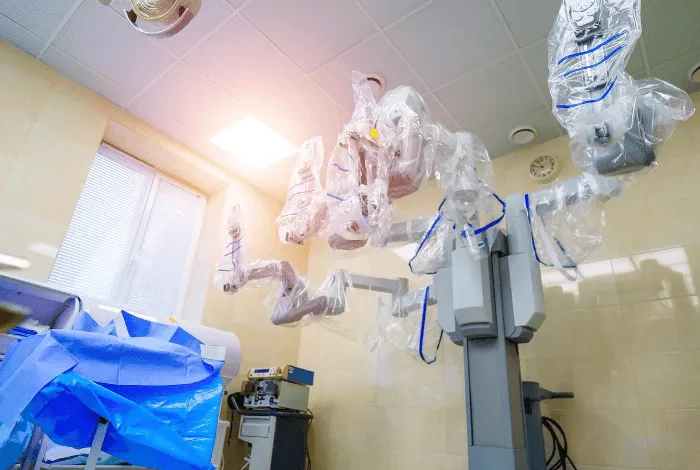Minimally Invasive Techniques: Percutaneous Spinal Instrumentation

Percutaneous spinal instrumentation in Frisco TX is a minimally invasive procedure that allows the surgeon to insert the pedicle screws into the patient’s vertebrae via small incisions. The back pain surgery clinic Frisco has highly qualified and professional neurosurgeons that use the percutaneous spinal instrumentation procedure to stabilize the spine, spinal fractures, deformity, tumors, and infections.
What Is Spinal Instability
Generally, spinal stability is the ability of the vertebral column or back under physiologic loads to restrict patterns of displacement. The purpose is to avoid irritating or damaging the spinal cord and nerve roots. Spinal instability can be both acute and chronic. In simple words, it refers to spinal displacement that causes pain, deformity, and other neurologic deficits. The spine or back has various systems that keep it stabilized and provide support to the spinal muscles, the bony spinal column, and the spinal cord. When there is too much flexion in the spinal joints or when they become dysfunctional, it can cause spinal instability. As a result, you will have excess motion and extreme back pain. Bone spurs or osteophytes can also sometimes cause pain. Neurosurgeons have been making substantial efforts to understand spinal biomechanics. Here, at the Minimally Invasive Neurosurgery of Texas, we have done extensive research on the proliferation of spinal instrumentation devices. Our surgeons have researched and successfully implemented advanced bone fusion methods through minimally invasive approaches. We understand how to refine the anterior spinal approach and develop microsurgical techniques to stabilize all segments of the spine. Accordingly, the use of percutaneous spinal instrumentation in Frisco TX has increased. Our surgeons understand that stabilizing the spine is a more sophisticated approach to treat spinal instability, bulging discs, back pain, and other deformities.
Are You A Suitable Candidate For Percutaneous Spinal Instrumentation?
If you have leg pain, but the symptoms are mild and not severe, then you don’t need to undergo the percutaneous spinal instrumentation surgery. You can follow conservative treatments, such as physical therapy, steroid injections, and pain medications. However, if these treatments fail, you may undergo the surgical procedure. Likewise, people with low quality of life due to spinal stenosis, bulging disc, or spinal deformity may also undergo the surgical procedure. Keep in mind that the process is elective in most situations. Still, it is crucial to determine whether or not your symptoms are severe enough and require surgery.
How Is Percutaneous Spinal Instrumentation In Frisco TX Performed?
Percutaneous spinal instrumentation is a minimally invasive procedure performed at our clinic. First, we give general anesthesia to the patient and follow other protocols or standards to provide enough comfort to him or her. Using X-ray guidance, we insert pedicle screws on both sides of the spinal column via skin and muscle incisions. Most often, we also use intraoperative computed tomography and robotic technologies to increase the effectiveness of spinal instrumentation. After inserting the screws, we use rods and add them through individual channels in the heads of the screws. Then, we secure the rods by locking the screw heads and immobilize the patient’s vertebral column.
Benefits Of Percutaneous Spinal Instrumentation
There are various reasons why we use percutaneous spinal instrumentation in our Back pain surgery clinic Frisco. The traditional surgery methods for the insertion of the pedicle screw requires the surgeon to make a significant skin and muscle incisions. Compared to other procedures, the minimally invasive procedure minimizes the size of the scar. It reduces the intensity of damages to the soft tissue. Other benefits include reduced blood loss, shorter operative time, and shorter hospital stay. Percutaneous spinal instrumentation in Frisco TX is one of the best techniques for spinal stabilization. At the Minimally Invasive Neurosurgery of Texas, our proficient neurosurgeons use intraoperative navigation to perform the surgery and fix the problem of spinal destabilization.
Percutaneous Spinal Instrumentation In Frisco TX – Success Rate
Generally, the success rate for the percutaneous spinal instrumentation is around 90% to 95%. When it comes to long-term of the success of the procedure, on average, it is 95% depending on the patient’s specific pathology. After the surgery, the patient will notice an improvement in his leg pain and the ability to stand and walk in a few weeks. Also, if an individual had severe pain or weakness before the surgical procedure, our surgeon may prescribe him a physical therapy program. It will strengthen the patient’s legs after the surgical procedure. The minimally invasive surgical procedure has also been very effective in solving problems like irritation and numbness in the spine and legs. Some patients undergo Laminotomy and decompressive procedures rather than placement of percutaneous instrumentation. You can consult the Minimally Invasive Neurosurgery of Texas to determine whether or not the percutaneous spinal instrumentation in Frisco TX is best for you.
Book An Appointment Now!
Working Hours
Business Hours :
8AM to 5PM - Monday to Friday
Closed - Saturday and Sunday
Phone Number
Call Us :972 366 6655
Email Us :[email protected]



